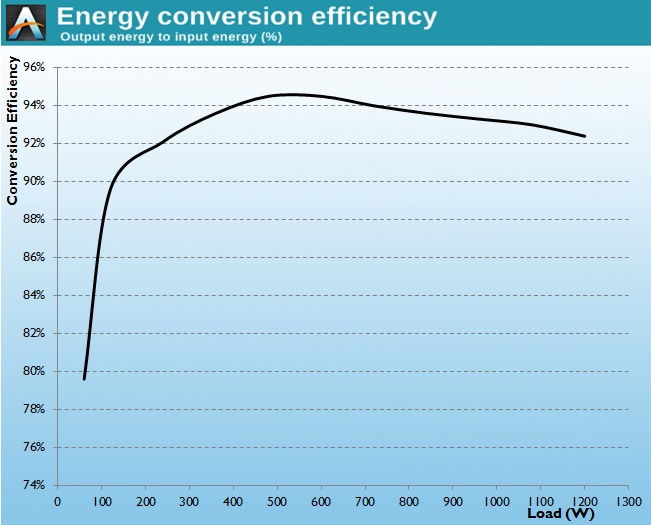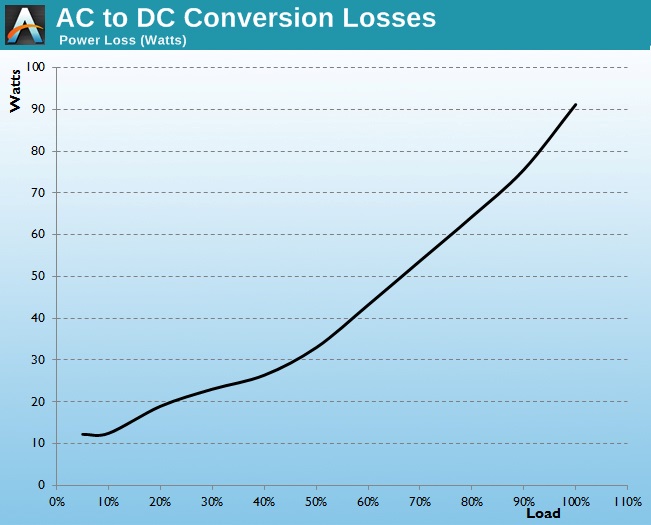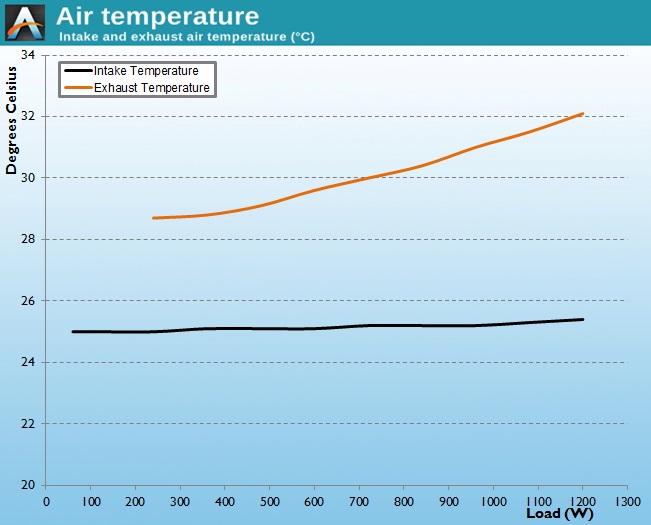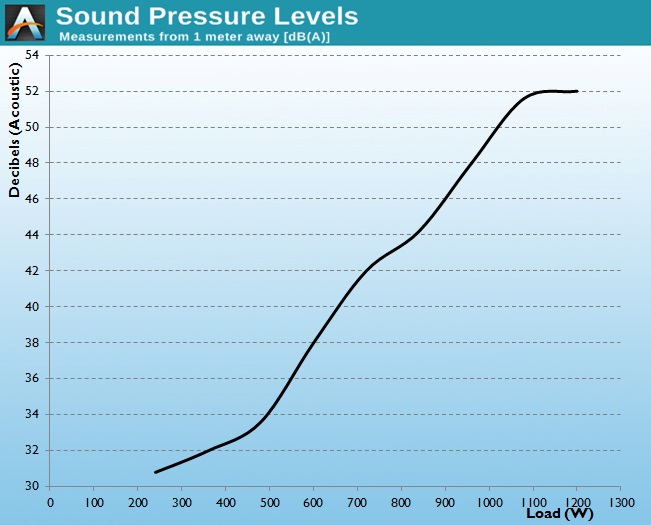Cooler Master V1200 Platinum Power Supply Review
by E. Fylladitakis on November 21, 2014 2:00 PM EST- Posted in
- Cases/Cooling/PSUs
- Seasonic
- 1200W
- Cooler Master
Cold Test Results
For the testing of PSUs, we use high precision electronic loads with a maximum power draw of 2700 Watts, a Rigol DS5042M 40 MHz oscilloscope, an Extech 380803 power analyzer, two high precision UNI-T UT-325 digital thermometers, an Extech HD600 SPL meter, a self-designed hotbox, and various other bits and parts. For a thorough explanation of our testing methodology and more details on our equipment, please refer to our How We Test PSUs - 2014 Pipeline post.
The Cooler Master V1200 Platinum performs very well at room temperature, with its efficiency peaking at 94.5% at 50% load. The average energy conversion efficiency within the nominal load range (20% to 100% of the unit's capacity) is 93.4%. As with all switching PSUs, the efficiency of the V1200 Platinum takes a dive at very low loads, dropping down to 79.6% with a load of just 60 Watts. The energy conversion efficiency climbs at such an extraordinary rate as the load increases that the energy losses do not increase at all within the 60 to 120 Watts output range.
Following the same pattern as Seasonic, Cooler Master optimized the V1200 Platinum for maximum reliability and low operating temperatures, sacrificing the acoustic performance of the unit. With the fan in Hybrid mode and with an ambient temperature of 25°C, the fan starts at just 20% load and its speed quickly climbs up as the load increases. Although the noise is endurable up to 40-50% load, the fan speeds up so much after that point that the noise output is already beyond typical tolerable levels. If the V1200 Platinum is running at nearly maximum load for a prolonged period of time (a few minutes or more), then the noise output goes above 52dB(A), an unreasonably high figure for typical consumer use.















27 Comments
View All Comments
E.Fyll - Friday, November 21, 2014 - link
"....is *not* very logical - a noisy...."bebimbap - Friday, November 21, 2014 - link
If i remember correctly, at the same frequency every +3dB sound seems 2x as loud and every +10dB sound seems 10x as loud. as different humans are more/less sensitive to different frequencies even at the same dB.jmke - Tuesday, November 25, 2014 - link
that counts indeed for dB. But notice that the sound levels are measured in dBA. A weighed it takes +10dBA to have make it seem twice as loud, not +3dBA ;-)DanNeely - Friday, November 21, 2014 - link
How does the 24pin ATX cable connect to the PSU? I'm assuming the 2 ports labeled 18P M/B and 10P M/B are involved; but since they have a total of 4 more pins than needed I'm curious what's going on since it's apparently more than just splitting the connector to make it easier to arrange everything on their backplate.vred - Friday, November 21, 2014 - link
You are right about the connectors. This is not a one-to-one connection between the two sides of the cable.redmist77 - Friday, November 21, 2014 - link
Exactly how many people out there are running 4-way SLI? They seem to be horribly over-represented in tech news.vred - Friday, November 21, 2014 - link
Because we are awesome?redmist77 - Saturday, November 22, 2014 - link
Both of you?vred - Saturday, November 22, 2014 - link
No, we're speaking of ourselves in plural. Do you mean there's... *another* one?rpg1966 - Friday, November 21, 2014 - link
The conclusion says: "it could be a good choice for systems that require a lot of power and operate under harsh conditions, as well as for gamers and professionals that do not prioritize low-noise operation over reliability and power quality".Isn't that completely wrong? For any gamer with a <800W system, the PSU will be be completely silent. Since that power limit covers almost all real-world gamers, it seems to me that it's the ideal (if expensive) PUS for "gamers ... that do prioritize low-noise operation, as well as desiring reliability and power quality".